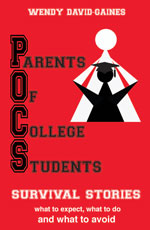POCS COA
| Cliché: | There’s more to it than meets the eye. |
| POCS Reality: | POCS can discover hidden costs above and well beyond stated college costs of attendance (COA). |
Trying to form a college list and wondering how expensive college is? The numbers speak for themselves:
For the 2013-2014 school year (now) tuition is ranging from around $5,000 at some 2 year community colleges to about $50,000 at the most expensive 4 year private schools. Thinking of getting a quality education at a bargain? Public state colleges usually offer special reduced rates for their own residents but hike their tuition for out-of staters.
That’s only the beginning of the story. The cost of attendance (COA) may start with tuition but the COA formula developed by the government and the colleges add several more items: college fees, books and supplies, room and board, transportation and personal expenses.
So that $50,000 approaches $70,000 at some private colleges for this school year and costs have been rising at ~5% per year.
A college’s listed COA is usually based on a hypothetical average student either living on campus or commuting. Actual costs may be substantially more than these projections based on: your student’s housing choices (single, double, triple, suite?), meal plans (full or modified?), travel costs (distance from home, frequency and method of transportation), miscellaneous expenses (clothing including cleaning/laundry, toiletries, entertainment … even pizza and lattes add up).
Here’s some more bad news: not all costs are included so I created the POCS COA.
I also explain these significant extras in my
seminar
and
book.
Whether living on campus or commuting, COA does not include:
• Start-up costs
• Program expenses
• Parent travel expenses
• Borrowing costs
To help you figure your POCS COA at different colleges, I created this chart:
| COLLEGE COSTS | COLLEGE | COLLEGE | COLLEGE |
| Tuition and Fees | |||
| Books and Supplies | |||
| 1Room and Board | |||
| Student Transportation | |||
| Personal Miscellaneous Expenses | |||
| Start-up Costs | |||
| Program Expenses | |||
| Parent Travel Expenses | |||
| Borrowing Costs |
| TOTAL POCS COA |
| 1 | Commuters include their living expenses. |
While you are comparing, here’s another POCS tip to keep in mind. Tuition can cost the same at an expensive private school as it does at a public state university. With the help of financial aid from the federal government and the school, as well as state programs and outside scholarships, college can be made affordable.
To help you compare your POCS COA at colleges your student received admission offers along with financial aid awards, I created this chart:
| COLLEGE COSTS | COLLEGE | COLLEGE | COLLEGE |
| TOTAL POCS COA | |||
| 1 Financial Aid Free $ Awards | |||
| Free $ from Federal | |||
| Free $ from State | |||
| Free $ from College | |||
| Free $ from Outside Scholarships | |||
| TOTAL Free $ | |||
| 2 POCS COA – TOTAL Free $ = | |||
| 3 How to Pay | |||
| Cash on hand | |||
| Federal Student Loans | |||
| Federal Parent Loans | |||
| Other |
| TOTAL Paid by Family |
| 1 | Before accepting, check for strings attached to grants/scholarships such as maintaining a certain grade point average and/or a specific major, playing on an athletic team, joining the band, only available for the first year of attendance. |
| 2 | If total costs are greater than the free money award, the family must pay the difference. |
| 3 | Federal Work-Study (FWS) is a financial aid program. When the student works, he receives a paycheck for his FWS job. However, since FWS does not reduce the college bill, it is not included on the chart. |




